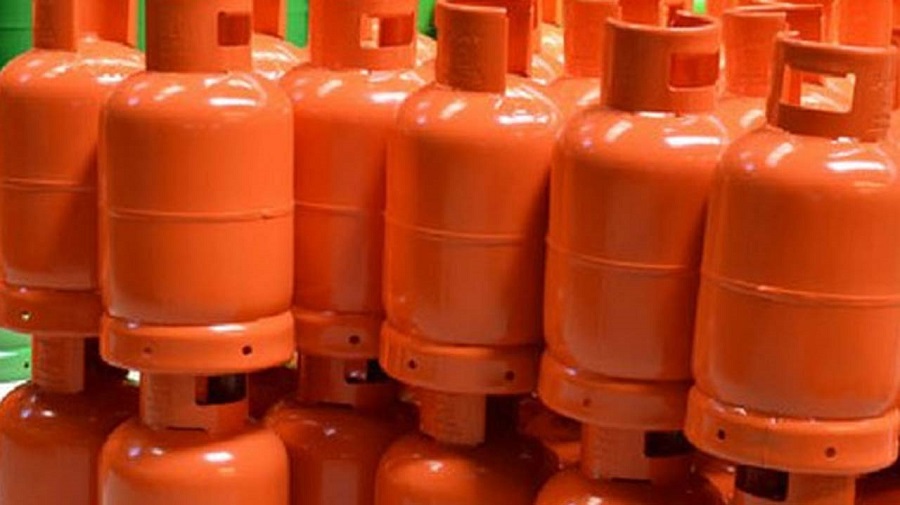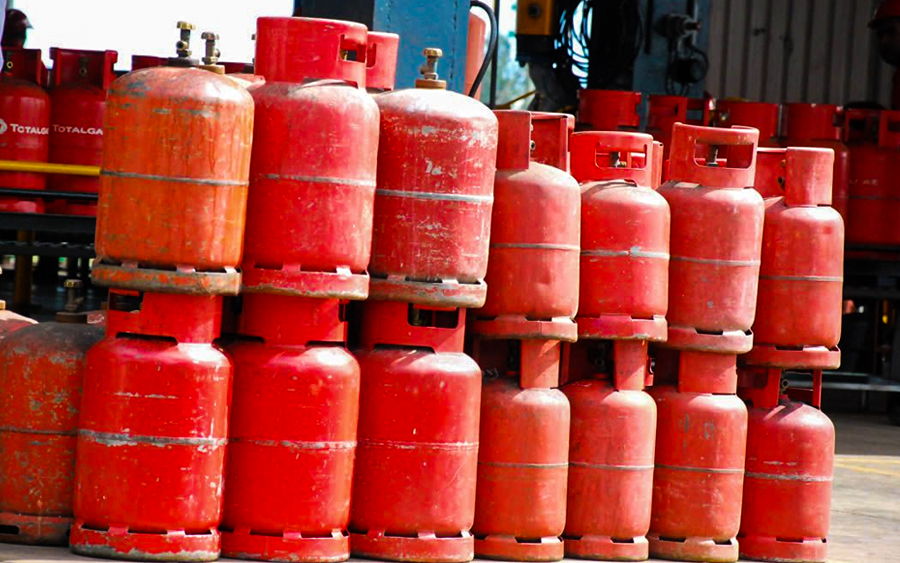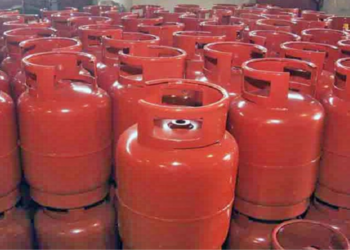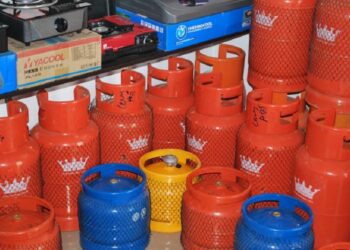Nigeria has been unable to deepen the penetration and utilization of Liquefied Petroleum Gas (LPG) in the country despite theoretically being in a position to produce sufficient LPG to meet local demand.
Although LPG is a safer and more environmentally friendly fuel for cooking food compared to kerosene and charcoal, many Nigerian homes, particularly in the rural areas, still do not have access to this energy source for a variety of reasons ranging from distribution and storage infrastructure deficits to high cost, insecurity and logistic bottlenecks.
Recently, the price of a 12.5kg cylinder of cooking gas jumped to over N5,000 in some parts of Lagos, drawing bitter complaints from domestic consumers who watch helplessly as inflation and other economic realities deal diminishing blows to their purchasing power.
READ: NCDMB launches LPG Composite Cylinder Manufacturing plant in Bayelsa
What experts, the FG and NLNG are saying
Omono Okonkowo, a Natural Gas Analyst, in an interview with Arise TV on Tuesday, spoke on some of the reasons for the difficulty in achieving optimum penetration of liquified petroleum gas in Nigeria.
She cited factors such as lack of sufficient investment in distribution and storage facilities particularly in rural areas, lack of clear cut policies from the government to drive LPG penetration, insufficient stakeholder collaboration, high cost of cooking gas, and the rising insecurity situation in the country as being responsible for the sub-optimal adoption of LPG in Nigeria.
“Many Nigerians in rural areas, don’t have access [to cooking gas] due to lack of storage, distribution facilities and poor transport infrastructure to rural areas,” she said.
READ: Techno Oil commences mass production of locally-made gas cylinders
She also stated that some industry players import LPG into the country relying on high parallel market dollar exchange rates that further drives up the cost of cooking gas for end-users, particularly making it unaffordable to low-income earners.
“For LPG penetration across sub-Saharan Africa to be successful we need to lay a good foundation including, distribution and storage, and policies to ensure we have the enabling environment for investment to thrive,” she said.
“We have lots of gas but no infrastructure around gas resources,” she stated further. “To reduce imports, adequate investments are needed. Gas suppliers are importing LPG, paying in dollars, and due to inflation this affects retail prices.”
READ: Oil marketers begin conversion of 7,000 outlets to autogas stations with N250 billion loan
She argued that despite having the resources, investments are lacking due to a lack of clear cut policies for LPG from the government.
On its part, the federal government has restated severally, its commitment to driving LPG adoption and penetration in the country. In February this year, the FG revealed plans to convert one million cars to gas at no cost, in its autogas initiative. Not much has been done in this regard since then.
In April this year also, the FG disclosed plans to launch Liquefied Petroleum Gas distribution channels in every local government in Nigeria. Mr Timipre Sylva, Nigeria’s State Minister for Petroleum stated:
“The ministry is targeting to ameliorate the energy challenge in Nigeria and clean cooking gas is key in this regard because 70% of greenhouse emissions are caused by deforestation.
This LPG project will enable us to empower rural women to use a more cleaner energy source for cooking.”
READ: Sahara Gas Vessel boosts LPG availability with historic 7,000MT delivery to Nigeria
Again, not much has been seen to have been done as regards execution for this policy statement.
Also in April, this year, the FG announced plans to inject 5 to 10 million Liquefied Petroleum Gas (LPG) cylinders into the market by 2022. The Programme Manager, National LPG Expansion Implementation Plan, Mr Dayo Adeshina, disclosed this at a sensitisation workshop on LPG Adoption and Implementation for Industry Stakeholders, in Lagos, stating:
“The Federal Government is working towards injecting five to 10 million cooking gas cylinders into the market within the next one year. We are starting the cylinder injection under the first phase in 11 pilot states and FCT, with two states from each of the geopolitical zones.
The states are Lagos, Ogun, Bauchi, Gombe, Katsina, Sokoto, Delta, Bayelsa, Ebonyi, Enugu, Niger and the Federal Capital Territory. The cylinders will be injected through the marketers. The marketers will be responsible for the cylinders and the exchange will take place in homes and not in filling stations.”
These policies notwithstanding, Nigerians are finding it increasingly difficult to continue buying cooking gas due to its rising cost.
READ: How to access CBN’s N250 billion intervention fund for gas sector
How Nigerians are reacting
The rising cost of LPG is taking its toll on many Nigerians. Some respondents who spoke to Nairametrics had this to say:
“I’ve had to return to the use of kerosene and sometimes, my charcoal grill to cook for my family. At over N5,000 for a 12.5kg cylinder of LPG, cooking gas is becoming gold in Nigeria. Although kerosene is not cheap either, I can at least buy it in small portions daily to meet my needs.” – Chioma Agu
“It is getting increasingly difficult to refill my gas cylinder. Everything is just so expensive now. Salaries have remained fixed but the rising cost of commodities is making Nigerians poorer. We were complaining when the price of cooking gas hit N4,000. Now it has risen further and is sometimes unavailable at fuel stations. The government needs to do more to alleviate the sufferings of Nigerians.” – Kenneth Audu
“I now switch between my electric burner and my gas cooker. Although the cost of electricity is high, we are still using the old metering system in my compound, so I do more of my cooking with the electric burner to save gas. If they eventually install prepaid meters, I am not sure what I will do. Perhaps I will return to the use of kerosene if the price of cooking gas continues to go up.” – Emmanuela John
“The situation in this country is getting crazier. The government has to do something about the rising cost of commodities. Cooking gas is slipping out of the reach of the average Nigerian and this defeats all their talk on deepening LPG adoption in the country.” – Sope Dairo
Bottomline
Although a lot is being planned and said about deepening LPG adoption in the country, the government needs to match talk with action in ensuring that these lofty policies are executed.
Last month, the Nigerian Liquefied Natural Gas (NLNG) Ltd stated that it was meeting about 40% of the demand for the domestic LPG market with the supply of about 370,000 metric tonnes (MT) of Liquefied Petroleum Gas (LPG) to the domestic market in 2020. This is still a far cry from where Nigeria should be in terms of meeting domestic LPG demands.
If it continues unchecked, the rising cost of LPG can become a curveball to the government’s drive for the mass adoption of LPG in the country. A lot remains to be done not only to provide the necessary infrastructure to achieve the LPG objectives but also to restore value to the naira and reverse the inflationary pressures that have seen Nigerians grow poorer even while working harder.





















I wish you good luck
talk talk and nothing to show any promise this people make to better the lives of the masses the revise always be the case
The retail outlet all over the country are not selling at the rate thereby shortchanging consumers
This has remained the only decent distribution channels in existence but if it’s properly done